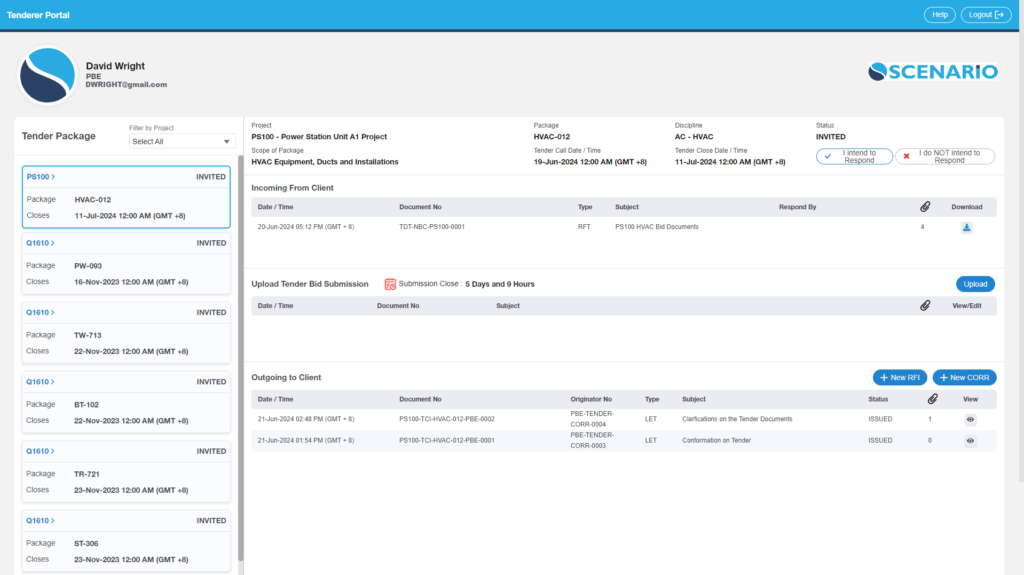Author
Scenario
Tendering on projects requires owners and contractors to qualify and select the best fit for the supply of work, services or materials for their project in a transparent and fair way. This process can be seen across different project phases because different specialists are required as the project progresses.
It is the client’s responsibility to ensure that the project is delivered with the best quality and cost and complies with legal and industry standards. Tender management is therefore crucial to ensure the works are awarded to qualified and competitive contractors, taking into account factors such as cost, experience and quality.
Benefits of Digital Tender Management
In the digital age, tendering in construction can greatly benefit from digitalisation in several ways, including:
- Increased transparency: By going digital, the tendering process becomes more accessible, ensuring equal access to information and opportunities for all tenderers. Real-time updates are provided, creating a secure and transparent system that eliminates corruption and reduces the likelihood of fraud.
- Improved Efficiency: Process automation through software or platforms makes the tendering process more efficient and less time-consuming. All tender information, documents, and processes are centralised, streamlining search and management.
- Enhanced communication with Better Accuracy: Digital tools facilitate better communication and information sharing among stakeholders involved in the tendering process. Communication is captured in the tool, creating an auditable trail and reducing the risk of human error in paper-based tendering.
- Time and Cost Saving: Digitalisation eliminates the need for paper-based submissions, reducing the time required to complete procurement processes. This speeds up the process, ultimately driving down costs through increased competition.
The Tender Stages
Different types of tendering processes exist based on the scope of work and compliance. However, the process generally involves the following stages:
- Tender planning: The first stage involves defining the scope of work and detailing the project requirements.
- Tender invitations: This is when the client issues invitations to the tenderers. Sometimes, an expression of interest is made before the formal invitation. Potential tenderers often have a period to raise queries about the details of the tender documents to ensure that tenderers understand the specifications and requirements clearly.
- Tender evaluation: After the tenderers hand in their responses to the tender, the client starts evaluating the submission based on the selection criteria set out in the tender document, including fee, technical requirements, and previous project experience.
- Contract award: The final stage is where the contract is awarded to the winning bidder.
Scenario Tender Management Module
Scenario provides functionality to manage the outbound and inbound distribution of information around a specific Tender for a Contract Package on a Project. The management of Tender information is centred around Contract Packages in Scenario.
Our Tender Management module also enables Tenderers to participate by allowing them to log in to a separate application called Tenderer Portal: A simple single-screen application to view all tender Documents from the client and upload Tender RFIs and Correspondence as well as their Bids without needing training and without logging in to the actual system.

